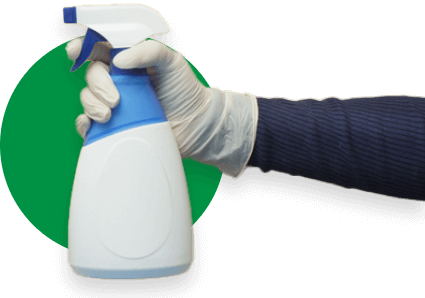Now that America is starting to get back to work, many people are worried about the second wave of viruses. Because the threat still looms, businesses must take every precaution when reopening. In this article, we want to share some of the best guidelines for companies and commercial buildings to follow. If we get this right, we can avoid a potential disaster in the coming months. Here’s what you can do to prepare.
Pre-Opening Checklist
Before welcoming employees and guests back indoors, you need to have a comprehensive plan of action. While each location will have unique challenges, these guidelines should serve as a foundation for making the right choice. Overall, it’s far better to be over-prepared than under-prepared, especially during these first few weeks.
Ventilation
According to the CDC, the primary method of viral contamination is via air droplets from infected individuals. So, for interior spaces, the most significant risk for individuals is staying close to anyone who might be a carrier. Adequate ventilation has to be in place before businesses can start to allow patrons or staff to enter. Now is the time to inspect your HVAC systems to see how well they generate airflow throughout the facility.
For those businesses without adequate ventilation, they might have to get a little creative with their solutions. The CDC recommends utilizing a variety of options, including opening windows, using fans to blow air throughout the space, and propping doors open. Anything you can do to encourage air droplets to dissipate as quickly as possible.
Building Inspection
For those offices or commercial spaces that have been closed during quarantine, many problems may have manifested during your absence. Mold, for example, might have grown unchecked during the past few months. So, before opening your doors, be sure to do a thorough inspection of every room and system. Also, if the vents have been offline this whole time, make sure to follow standard protocol when turning them back on. If necessary, get assistance from a licensed technician.
Cleaning Schedule
Once people start coming back to work and moving through the building, you have to be careful about potential virus transfer points. Although the CDC does say that fomites (infected surfaces) are not a significant hazard, they can still lead to infection if you’re not careful.
We highly recommend coming up with a cleaning schedule before reopening so that you can plan operations accordingly. For example, it may be necessary to have designated cleaning staff on-site throughout the day to wipe down surfaces and do spot checks.
Fortunately, the coronavirus can be killed by ordinary cleaners and solvents, so you don’t have to rely on industrial-grade equipment. Alcohol wipes and household chemicals can get the job done just as well. You can also make your own cleaning solution by mixing bleach and water. Just be sure that the dilution is low enough to avoid potential health hazards and staining.
Equipment Needs
To help maintain a safe workplace, you will have to provide cleaning materials and personal protective equipment (PPE) for staff. These elements can include face masks, gloves, sanitizer stations, and hand wash stations with soap and water.
Before reopening, we highly recommend assessing your needs so that you don’t run out of these materials too quickly. Also, have a plan in place for replacing these items as they disappear, so you’re not left in a dangerous situation.
Opening Guidelines
Once you’re ready to welcome employees and guests back into the building, there are other guidelines you’ll have to follow. Again, each business is unique, but try to maintain these standards as much as possible.
Maintain Social Distancing
Because air droplets are the primary source of infection, individuals must stay at least six feet apart from each other. Be sure to monitor areas where this is impossible, such as hallways and elevators. Also, in large spaces, you’ll need to be able to disperse crowds and congregations. For example, if people are waiting to use the elevator, create markers six feet apart to help individuals know where to stand. It might even be necessary to have a designated attendant to provide assistance.
Implement a Mask-Wearing Strategy
One of the best ways to prevent person-to-person transmission of the coronavirus is to have everyone wear masks. While this policy may not be desirable in some businesses, there should be some way to reduce the risk of transmission. For example, employees must wear a mask when talking with guests, or while in vulnerable locations (i.e., the elevator). This way, even if someone is asymptomatic or pre-symptomatic, the disease won’t spread throughout the building.
Communicate With Employees and Guests
To help ensure a smooth transition during reopening, you want to be as open and communicative as possible. Not only should you notify employees of the new standards and procedures, but you should have signs posted to remind guests. This way, everyone can be on the same page, and you can protect your business from potential legal issues.
Assess Needs During the Reopening Process
No matter how prepared you are for reopening, there will always be unforeseen circumstances. In some cases, you might not be able to predict how individuals will react to specific guidelines. In other instances, it might not be feasible to enact various elements of your plan, such as a rigid cleaning schedule.
So, during this transition time, it’s best to be flexible and accommodating to your employees and guests. As we mentioned, it’s best to over-prepare at first, as it’s always easier to loosen these guidelines later on. By taking an extra cautious approach, you can maintain operational efficiency without creating any undue risks along the way.
Contact Dallas Janitorial Services Today
If you need assistance with your cleaning schedule and reopening plan, we’re here to help. We have been able to respond to this crisis with poise and responsiveness, and we know how to keep everyone safe. Call us to find out what options we have and how we can help your business get back on track.







